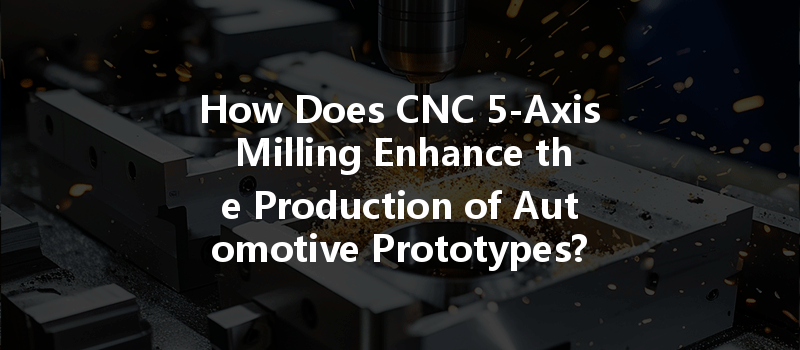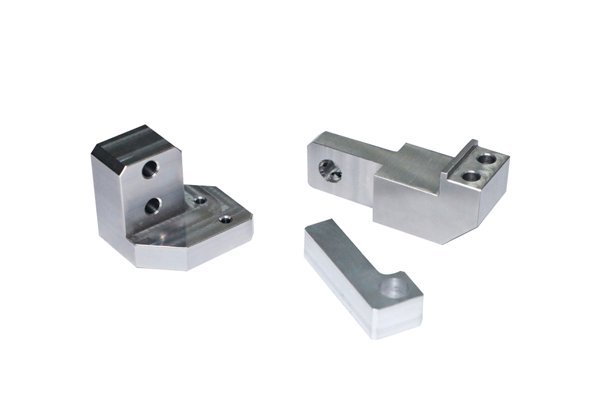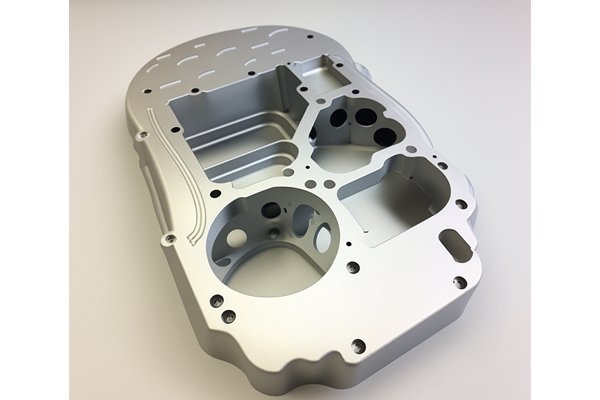Did you know that 5-axis CNC milling can reduce the time needed to fabricate complex automotive parts by up to 40%? This remarkable efficiency not only speeds up production but also significantly enhances precision, a critical factor in the automotive industry where even the slightest error can lead to substantial safety issues. In an era dominated by rapid technological advancement, the demand for innovative solutions in automotive manufacturing has never been higher.
Welcome to the evolving landscape of automotive prototypes, where CNC (Computer Numerical Control) machining is transforming the way manufacturers create intricate designs quickly and efficiently. In this blog, we will delve deep into how CNC 5-axis milling stands at the forefront of this technological revolution, offering a detailed guide to its applications, benefits, processes, and various solutions to challenges faced in automotive prototype production.
Understanding CNC 5-Axis Milling
What is CNC 5-Axis Milling?
CNC 5-axis milling refers to a computerized manufacturing process that allows a cutting tool to move simultaneously along five different axes. This ability grants manufacturers unmatched versatility, enabling them to create complex parts with intricate geometries that traditional 3-axis milling machines simply cannot achieve.
With the capability to pivot and maneuver around a workpiece from multiple angles, 5-axis milling allows for:
The Evolution of Automotive Prototypes
The automotive industry has transformed dramatically over the past few decades, evolving from manual techniques to highly automated production methods. The need for prototyping has grown, with designers requiring rapid manufacturing solutions that do not compromise on quality.
CNC technology has risen to this challenge, leading to the development of more efficient processes. As a result, automotive manufacturers have begun employing 5-axis CNC milling to gain a competitive advantage in terms of speed and precision.
Benefits of CNC 5-Axis Milling in Automotive Prototyping
The foremost advantage of employing 5-axis milling in automotive prototyping is the significant reduction in production time. With the capability to machine complex parts in a single setup, manufacturers save valuable hours that would otherwise be spent repositioning and aligning workpieces.
Precision is paramount in automotive manufacturing. With 5-axis machining, tools can reach intricate areas without sacrificing dimensional accuracy. This capability leads to tighter tolerances and ensuring that each part meets rigorous industry standards. The reduction in human error associated with multi-step setups further bolsters the accuracy of the final products.
In a rapidly changing market, the need for adaptability is crucial. 5-axis CNC milling allows manufacturers to modify designs quickly without extensive downtime. This flexibility is particularly beneficial in the automotive sector, where consumer preferences or regulations may shift unexpectedly, prompting companies to adapt promptly.
The upfront investment for 5-axis CNC machinery may be higher than traditional machines, but the long-term savings are substantial. By consolidating multiple machining operations into one, manufacturers can significantly reduce labor costs, material waste, and production times.
Parts produced with 5-axis milling typically exhibit superior surface finishes due to the continuous cutting action of the tool. This quality is particularly relevant in the automotive industry, where aesthetics and performance go hand-in-hand.
The CNC 5-Axis Milling Process Explained
Before any machining can occur, an automotive prototype must be meticulously designed with the help of CAD (Computer-Aided Design) software. Once a design is finalized, it is translated into machine language through CAM (Computer-Aided Manufacturing) software. The programmer defines tool paths, specifies cutting parameters, and optimizes production processes.
Choosing the right material is critical for achieving the desired properties in automotive parts. Common materials include aluminum alloys, high-strength plastics, and titanium. Each material presents unique challenges and advantages that must be considered early in the design stage.
For optimal results, precision calibration of the CNC machine is required before production begins. This entails positioning the workpiece accurately, setting coordinate systems, and ensuring that tools are sharp and properly mounted.
Once everything is set up, the CNC 5-axis milling machine begins the manufacturing process. The cutting tool moves along five axes, allowing it to approach the workpiece from multiple angles. This reduces cycle times and ensures that complex geometries are cut accurately in one continuous operation.

Following production, every prototype undergoes rigorous testing. Quality checks often include dimensional measurements, surface finish assessments, and functional tests. This step is vital to ensure that prototypes meet industry standards and specifications.
Overcoming Challenges with CNC 5-Axis Milling
While CNC 5-axis milling offers numerous benefits, manufacturers may face certain challenges during the hierarchy of automotive prototype production. Understanding these challenges can help businesses implement effective solutions.
Challenge: The initial capital investment for a 5-axis CNC machine can be substantial, potentially deterring smaller manufacturers.
Solution: Exploring leasing options or phased purchasing plans can mitigate immediate financial burdens. Additionally, emphasizing long-term cost savings will help justify the investment.
Challenge: Programming a 5-axis machine is inherently more complex than 3-axis machining. Producing high-quality results requires skilled technicians.
Solution: Providing extensive training for operators and utilizing user-friendly programming software can reduce the learning curve and improve production quality.
Challenge: The intricate movements and continuous cutting can lead to quicker tool wear, thereby increasing maintenance efforts.
Solution: Regular maintenance and the use of advanced tooling materials can extend tool life. Keeping track of tool condition and performance metrics can allow timely replacements.
Challenge: If programming is incorrect or if there’s an error with the machine, the cost of rework can be significant.
Solution: Implementing comprehensive quality control measures and conducting regular programming audits can minimize errors and catch issues early in the process.
Case Studies: Success Stories of CNC 5-Axis Milling in Automotive Prototyping
Case Study 1: Major Automotive Manufacturer Reduces Prototype Development Time
A leading automotive manufacturer sought to enhance its prototype development process. By integrating 5-axis CNC milling into their workflow, they managed to cut development time by 40%. The new capabilities allowed them to manufacture complex multi-component parts in a single setup, streamlining the process and enabling faster testing phases. As a result, they launched new models quicker, staying ahead of competitors.
Case Study 2: Start-Up Company Elevates Their Product Offering
A start-up focused on electric vehicles utilized 5-axis CNC milling to prototype key components of their innovative designs. The precision offered by the technology meant they could achieve tighter tolerances on battery housings and electric motor enclosures. Their ability to adapt quickly to design changes proved essential for their initial market launch, allowing them to secure significant investment.
The Future of CNC 5-Axis Milling in Automotive Prototyping
Innovations on the Horizon
As CNC technology continues to evolve, several trends are emerging that will shape the future of automotive prototyping:
The Role of Sustainability
In the face of increasing environmental awareness, the automotive industry is under pressure to adopt more sustainable practices. CNC milling can reduce waste material through precise cutting techniques and promote the use of recyclable materials. Manufacturers that invest in sustainable processes will not only comply with regulations but can also enhance their brand reputation.
The introduction of CNC 5-axis milling into automotive prototyping has revolutionized how manufacturers create complex parts required for modern vehicles. Through increased efficiency, precision, and flexibility, businesses straddling the precipice of innovation can leverage this technology to not only meet consumer expectations but also push boundaries in automotive design.
By embracing 5-axis CNC machining, manufacturers can remain competitive in an ever-evolving landscape while addressing the challenges of production. The ability to create high-quality prototypes faster and more accurately is no longer just a competitive advantage; it is essential for survival in this rapidly advancing industry.
As we look to the future, the fusion of technology, adaptability, and sustainability will drive change in the automotive sector. Understanding the solutions and implications of CNC 5-axis milling in automotive prototypes is essential for manufacturers who aim to thrive in tomorrow’s marketplace. It’s a significant subject worth contemplating for anyone involved in automotive design and manufacturing. Embrace this technology; it could very well steer the direction of your automotive innovations.






